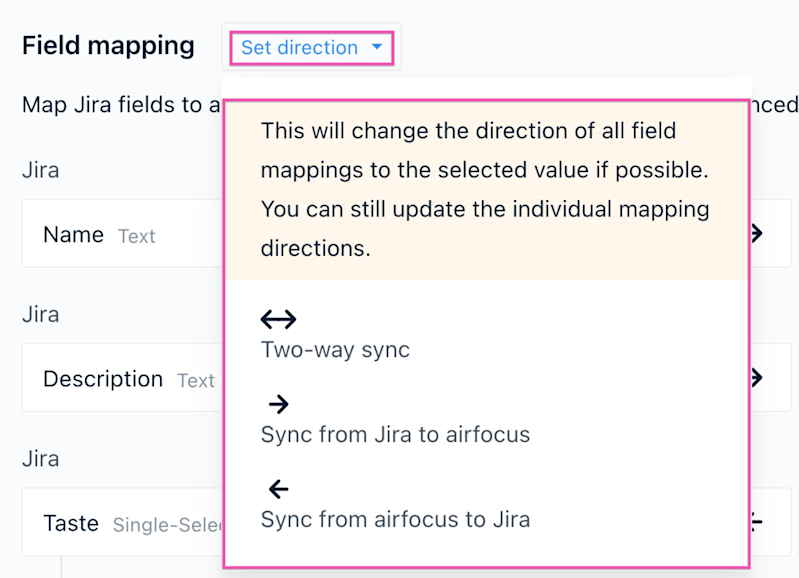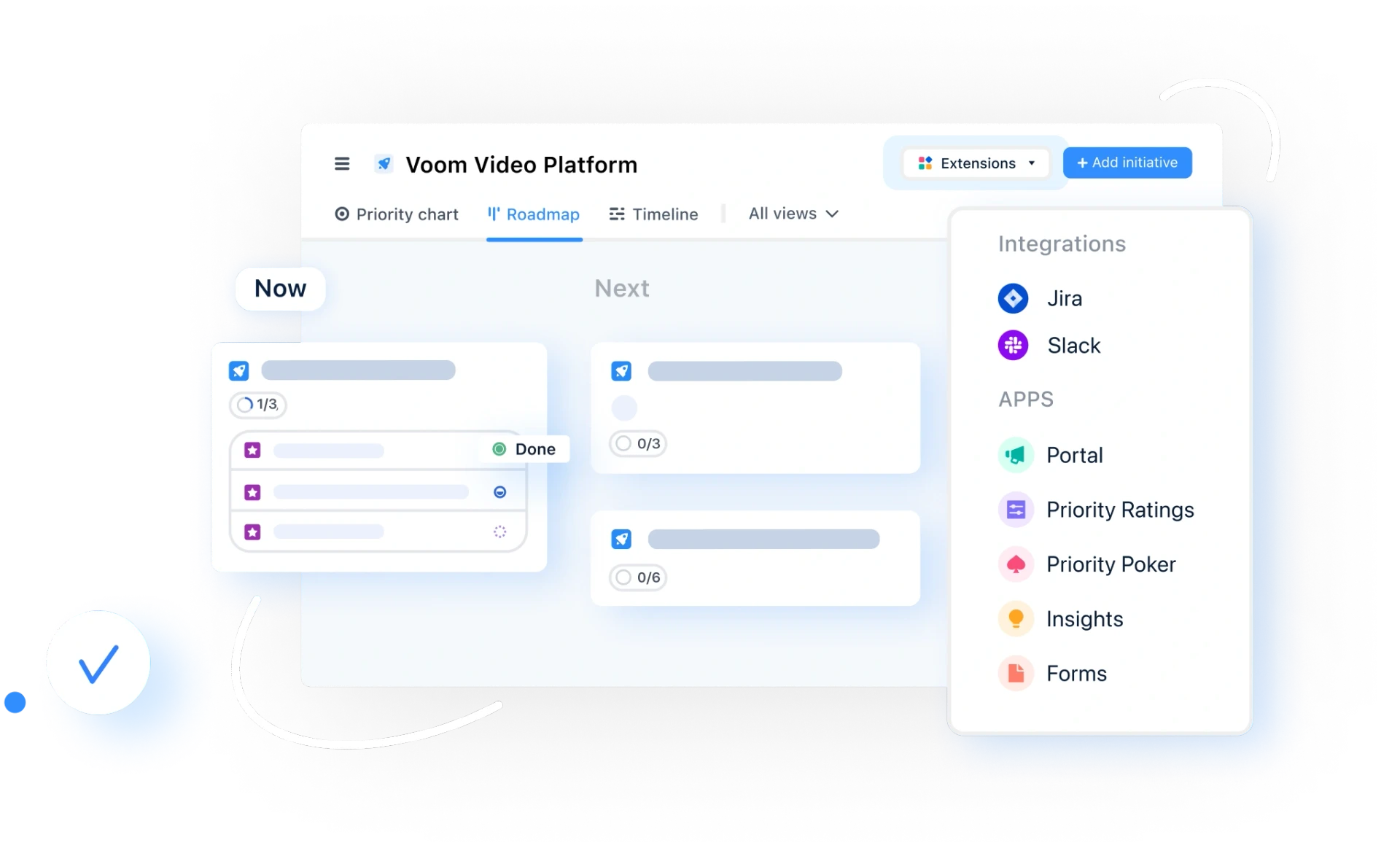Jira x airfocus: where each shines, and how they work together

Since joining the Lucid family in April 2025, airfocus has expanded what’s possible for product teams; connecting strategy with delivery and enabling visual collaboration across the tools they already know and love.
We sat down with Spencer Cowley, Product Manager at airfocus, whose team is dedicated to strengthening the Jira airfocus integration, making it smoother, more flexible, and even more valuable for teams that want to keep strategy and execution perfectly in sync.
He walked us through what makes the integration click, why airfocus is the ideal space to connect strategy with execution – not just before Jira, but throughout the entire development lifecycle – and how Lucid adds a whole new layer of collaboration on top.
The problem most product teams can relate to
If you manage product at any scale, you’ll likely recognize this rhythm: ideas and feedback flow in from everywhere, you explore options, you converge on a solution, and only then are you ready to move work into a delivery tool.
For many teams, Jira is that delivery tool. But what about everything that happens before the first ticket exists?
That upstream work is where airfocus begins.
airfocus and Jira: Connecting strategy to delivery
Jira is brilliant for execution. It is where engineering plans, estimates, runs sprints, and tracks granular progress. Nothing about the integration tries to replace that.
airfocus lives a step earlier and a layer higher. It’s where product teams:
Gather and triage feedback in one place instead of hunting through spreadsheets and scattered notes
Turn raw feedback into opportunities and initiatives that can be prioritized
Connect those opportunities to OKRs and themes, so the product roadmap tells a value story
Share stakeholder‑friendly views that make sense outside of sprint boards.
When the decision is made and the team is aligned, you push the initiative or epic into Jira. From that point, engineering can work in Jira while airfocus remains the strategic home for context, alignment, and reporting. ”When we are ready to execute, with alignment and research in place, that’s when I push the item from airfocus to Jira,” Spencer said.
Jira x airfocus: Better together
The Jira integration isn’t just a connector; it’s built to flex around how your team actually works. Whether you’re managing one workspace or 10, every setting can be tuned to fit your process.
Here’s what that looks like in practice:
Per‑field direction. Choose how each field syncs bidirectionally between airfocus and Jira, or in a single direction, so data stays consistent across both tools.
Smart filtering. Use projects and JQL to import just the issues you care about, for example, only epics with a particular label.
Hierarchy awareness. If parent and child links already exist in Jira, airfocus can auto‑link them so portfolio views stay consistent.
Progress without context‑switching. Syncing tasks or stories lets stakeholders see status and progress in airfocus without opening Jira.
Cadence you control. Automatic sync can run on a schedule when the workspace is open, and teams can trigger manual syncs during bulk edits. Spencer’s setup ran roughly every 10 minutes.
Together, these details make the Jira x airfocus connection feel seamless; a bridge between strategy and delivery that adapts to the way your team already works.

Behind the integration: what it solves for product teams
We asked Spencer to dig into how real teams use the Jira and airfocus integration. He explained what it solves, where it shines, and how Lucid is helping shape what comes next.
Q: How do you define the point where Jira ends and airfocus begins in a workflow?
Spencer: “When we are ready to execute, with alignment and research in place, that’s when I push the item from airfocus to Jira.”
What it means in practice: once the team has validated an idea, airfocus hands off cleanly to Jira for delivery.
Q: Why not just track everything in Jira from the start?
Spencer: “I don’t want to put things in Jira until we’re confident and aligned. That pre‑Jira space in airfocus is extremely valuable.”
What it means in practice: airfocus is the decision space. You collect feedback, map it to opportunities, explore solutions with design and engineering, and only then create the epic or initiative in Jira.
Q: What changed when you brought feedback into airfocus?
Spencer: “Before airfocus, feedback lived in spreadsheets and scattered notes. Once we got airfocus, tying feedback to opportunities became a whole different ballgame.”
What it means in practice: feedback from Slack, community posts, research calls, and CSMs lands in one place, links to the right opportunity, and stays attached as evidence. When leadership asks why something matters, you have the receipts.
Q: How do you keep product and engineering aligned day to day?
Spencer: “Syncing stories from Jira lets us see status and progress in airfocus at a glance. But the real value is that everyone (engineering, UX, and product) knows they can go to that opportunity in airfocus to find everything they need: discovery docs, requirements, relevant feedback, and status updates.”
What it means in practice: airfocus acts as a single source of product truth. Stakeholders get context and alignment in one place, while engineers keep working in Jira. Parent and child relationships created in Jira stay visible in airfocus portfolio views.
Q: Where does Lucid fit now that airfocus is part of the Lucid family?
Spencer: “We import airfocus items onto a Lucid canvas so the whole group can prioritize together, even if they don’t have airfocus creator seats. We run t‑shirt sizing or an impact‑versus‑effort activity, then bring that decision back into airfocus.”
What it means in practice: Lucid helps you run collaborative estimation and prioritization sessions with a wider group. It lowers the barrier to getting input while keeping the product record in airfocus.
Visibility that scales with your team
Different roles interact with the integration in different ways, and that’s exactly how it’s meant to work. “The goal,” Spencer said, “is to make sure everyone has just the level of visibility they need, from high-level strategy to the details in delivery.”
For product managers, it means one place to prioritize and plan before pushing work into Jira.
For engineers and TPMs, it means context, and seeing how each task connects to the bigger picture.
For CSMs and go-to-market teams, it’s an easy way to feed customer feedback into the roadmap.
For product leadership, it brings portfolio views, OKR alignment, and cross-team clarity in one shared space.
Together, that shared visibility turns the integration from a simple sync into a system of alignment, where every role contributes to the same strategy.
The bottom line
Use airfocus to decide what to build and why it matters. Use Jira to manage how it gets built.
Let the integration keep strategy and delivery honest and in sync, with Lucid stepping in when you want a wider group to collaborate on the decision or execution.
Emma-Lily Pendleton
Read also



Experience the new way of doing product management

Experience the new way of doing product management




